On a late summer afternoon more than half a century ago, Chris and Monty Field, teenage brothers, found a spot on the courthouse square in Harrisburg, Illinois, to watch a Shriners parade. By some accounts, 12,000 people had gathered for the festivities, even though the population of this farm town was only about 9,000. As 40 marching units, some in their characteristic fezzes, came down the street, Chris and Monty engaged in conversation with a striking blonde in her early 30s who spoke with an English accent. Her name, she said, was Louise. She was there with her children and two brothers. Louise did most of the talking, but the younger of the two brothers, whose name was George, made an impression all the same. “He had a funny haircut, kind of long and stringy,” Monty recalls. “Most of the boys at that time had flattops.” George was wearing jeans, he noticed, with a hole at the knee.
They had been camping the night before, Louise said, at Garden of the Gods, about 22 miles southeast of Harrisburg. The campground was part of the Shawnee National Forest in southernmost Illinois, bordered by the Ohio River to the east and the Mississippi to the west. Its vistas were unlike any George would have seen in England: sandstone bluffs rising incongruously above almost endless stretches of flat farmland.
“Chris and I figured that George ripped his jeans on that camping trip,” Monty Field says. “That was the most generous explanation we could come up with, though with that hair, you kind of wanted to give him some money to see a barber.”
“If you didn’t go the barbershop once or twice a month,” Chris adds, “you were a poor person.”
Louise said George was in a band back in England, where he lived. So, later that day, Chris and Monty went to Skaggs Electric Supply Company, which sold records alongside light bulbs and extension cords, and asked the proprietor if he had anything by a band called the Beatles. The man shook his head. “Never heard of ’em,” he said.
That’s not surprising. In September 1963, almost no one in America had heard of the Beatles, much less of George Harrison, their quiet lead guitarist. Back in England, things were different. The Beatles’ first LP, “Please Please Me,” had been released the previous March, and the single “She Loves You” had come out in August. That summer, the four of them had moved from Liverpool to a hotel in London’s upscale Bloomsbury neighborhood. Screaming girls were fainting at their performances. “I Want to Hold Your Hand” would be released in November, and by December, the Beatles would have released four singles and two albums, all while appearing regularly on the BBC and playing almost 200 concerts in 1963 alone. For the first time in their young lives, the four working-class boys who’d grown up in a bombed-out city had money, and demands on their time were piling up. Needing a break from touring and recording, in September Paul McCartney and Ringo Starr visited Greece. John Lennon and his wife went to Paris. George chose to visit his sister, in Benton, Illinois (pop. 7,000).
His two weeks there, starting on September 16, might have been the last carefree moments of an increasingly hectic, difficult and arguably tragic life. In America, no one knew who George was or cared. He was just Louise Caldwell’s skinny little brother, a 20-year-old with a weird haircut, who said he played the guitar and sang a little, and was gaga for American cars, especially ones with tail fins.
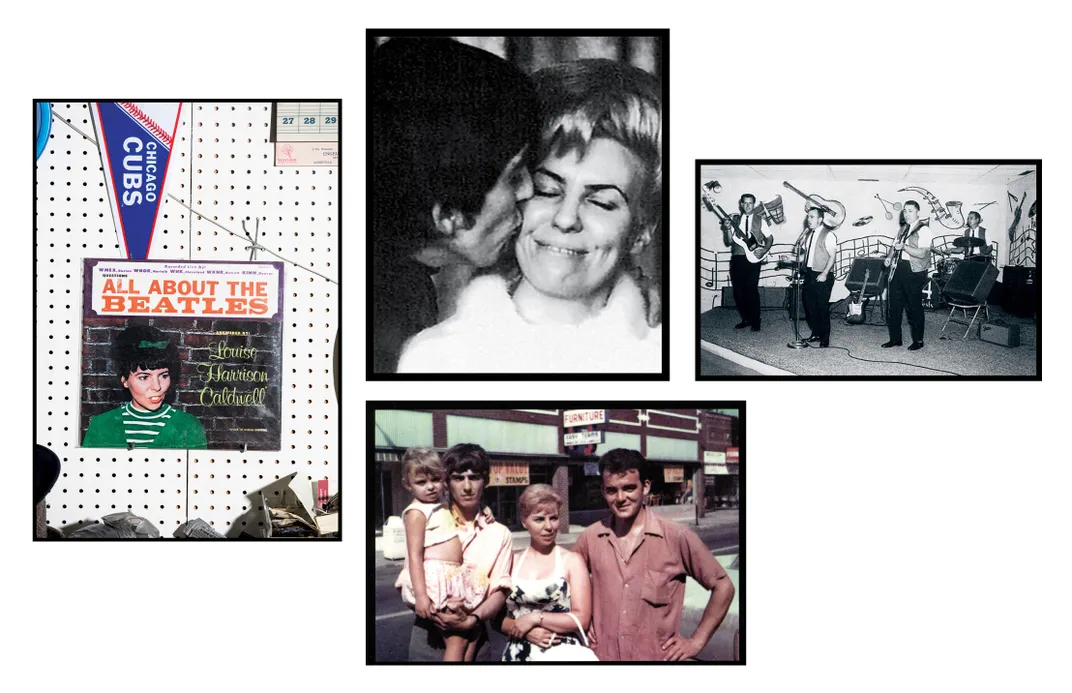
Louise had married Gordon Caldwell, a Scottish-born mining engineer who moved to Southern Illinois for its then-booming coal industry. As soon as they had settled in Benton in a brick bungalow at 113 McCann Street, just off Main Street, Louise was prevailing upon local radio stations to play the Beatles 45s her mother would send her from Liverpool. When Louise learned that George was coming to town, she ramped up her efforts. Louise was the promoter. George, soft-spoken and bashful, did what she asked. To the kind and unassuming local residents who met George, soon to be one of the most famous people in the world, their brush with him was not much more than an amusing curiosity.
George and his older brother Peter flew into Lambert Airport in St. Louis, 112 miles northwest of Benton, on September 17. Louise met them in her white Dodge Dart. There was not much to do in Benton, and when Louise introduced George to Warren Batts, a neighbor on McCann Street, he “felt like she was kind of palming [George] off on me.”
But she had her reasons. Batts, too, played the guitar. George would go over to Batts’ house, and they would practice together. “George really liked Chet Atkins and Carl Perkins, and we’d work on their licks,” Batts recalls. “He didn’t seem especially ambitious about the band he was in back home, but he was serious about being a better musician.”
George’s time in Southern Illinois was wonderfully ordinary. Louise took him to the Marion Drive-In (which no longer exists), where they saw Wonderful to Be Young. George was impressed. “You drive your car in and you see all these little things like parking meters,” he explained in an interview when he returned to England, “but they’re not parking meters; they’re speakers, and you pull them in the car and wind your window up, and it’s great.” The concept wouldn’t work in England, he went on, because “all you would see of the movie would be the windshield wipers going back and forth.”
The most popular local band was the Four Vests, fronted by bass player Gerald “Gabe” McCarty, a laid-off sheet metal worker then working as a dry cleaning delivery man. As the story goes, McCarty first heard the Beatles while making a delivery to Louise’s house and she was playing the Please Please Me album. McCarty took George to the Boneyard Bocce Ball Club in Benton (which does still exist). McCarty and Vern Mandrell, the Four Vests’ rhythm guitarist, also took George to the A&W root beer stand, where customers stayed in their car and a waitress arrived on roller skates. When a car hop asked George about his haircut, he told her he was in a band back in England and that he wished they could get a hit in the States.
At the time, that seemed like a pipe dream, says Terry O’Neill, a fellow Liverpudlian who knew the Beatles before they became famous. O’Neill was a bouncer at the Cavern Club, where the Beatles performed, and other Liverpool hot spots. “Those were rough times,” O’Neill recalls. “In our street, only two guys owned cars. Only two people in our neighborhood had TVs. We were still trying to get back on our feet after the war.” Liverpool was, next to London, the most heavily bombed British city in World War II.
No one “expected anyone from Liverpool to go anywhere,” O’Neill says over bangers and mash at Penny Lane Pub, the restaurant he opened in Richmond after moving to the Virginia capital in the late 1970s. “People from London looked down on us because of our accent, like New Yorkers here look down on Southern ‘rednecks.’ Liverpool was a working-class town, and there were only five things a young man could do. You worked in the coal mines, you worked in the shipyards, you joined the army, you became a sailor, or you went to jail.”
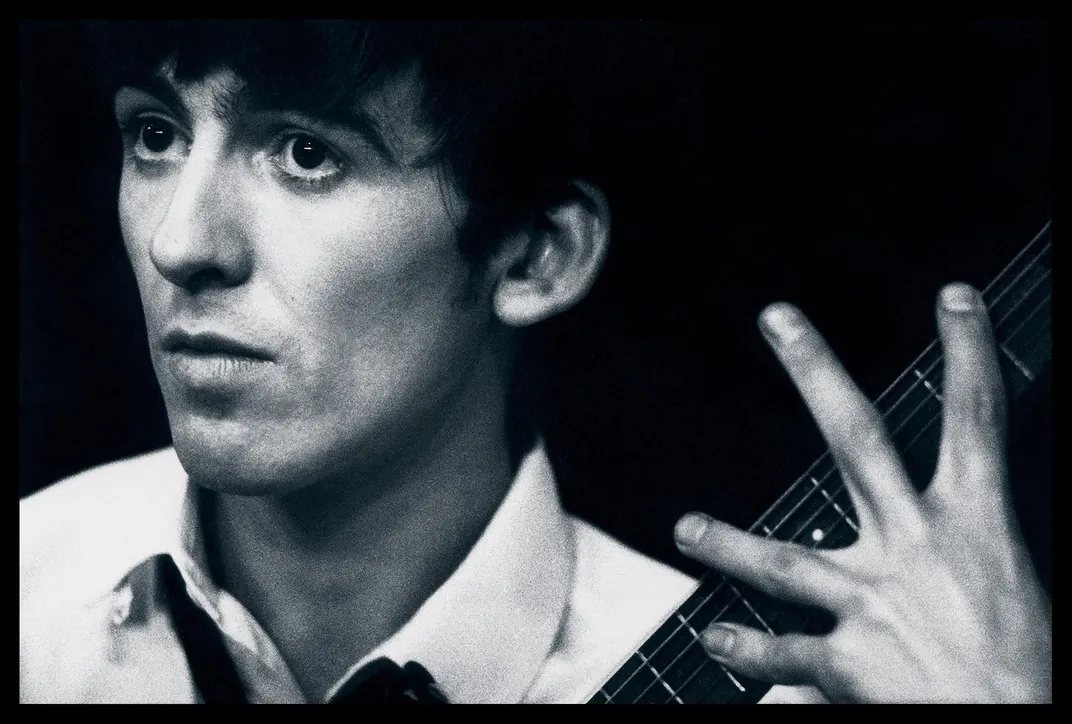
George, like many others in Liverpool at the time, had grown up without indoor plumbing. The only heating was in the kitchen, and when his frequently unemployed father landed a job as a bus driver, he was overjoyed. Musicians from Liverpool weren’t expected to make it big. Even after the Beatles scored hits in Britain, O’Neill adds, success in America was unimaginable: “To a kid like George, America was a swimming pool in the backyard, convertibles in the driveway, a house in the suburbs. It was Al Capone and gangsters and cowboys, maybe, but, more than that, it was Doris Day and Rock Hudson.”
One day while George Harrison was in Illinois, Mandrell, who also ran Vern’s Lock Shop, drove him to Fenton Music Store in Mount Vernon, half an hour north of Benton. There they admired a Rickenbacker 425 guitar. It was fireglow red, though, and George wanted it refinished black—like a Rickenbacker 425 Lennon owned. “George offered the owner $400 cash, and he picked up the guitar a few days later,” Mandrell says. “I asked George why he’d pay $400 for a guitar he could get for half that back in England, and he said, ‘My sister told me she’d buy it for me. I’m not stupid.’” (The guitar, which he used when the Beatles recorded “I Want to Hold Your Hand” a month later, sold at auction in 2014 for $657,000.)
While George enjoyed his R&R, Louise was busy promoting the Beatles. Besides dropping off records at the area radio stations, she prevailed upon local influencers—well, high school girls—to interview him. Marcia Schafer, the 17-year-old daughter of one of the owners of WFRX in West Frankfort, hosted her own “Saturday Session” program for teens, and Louise took George to the studio. “There was that hair, of course, but he was also wearing jeans and brown sandals with socks,” Marcia, who still works in marketing for local radio stations, tells me over coffee at the Dixie Cream Donuts in West Frankfort.
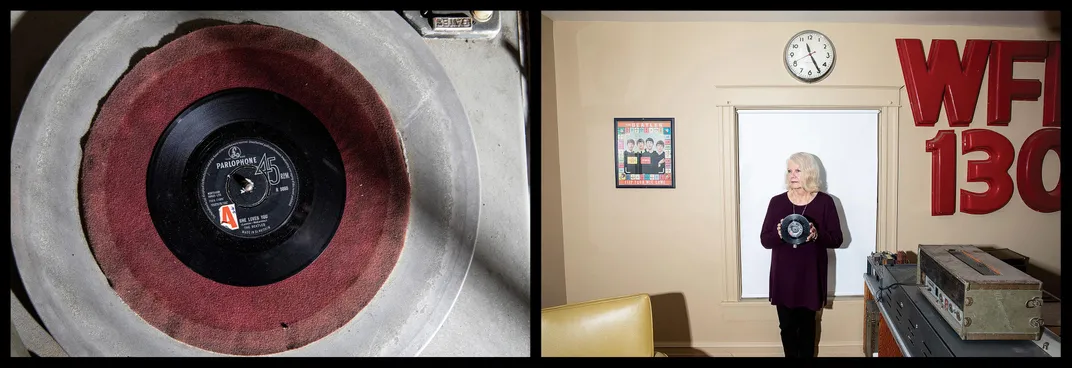
George told Marcia that he was an apprentice electrician, but that the Beatles were really taking off back home. “He really liked my dad’s Oldsmobile Delta 88,” Marcia recalls. On her radio show that day she played “From Me to You” and “She Loves You,” but it’s her recollection that the songs made little impression on her listening audience. George gave her a copy of “She Loves You,” which she keeps in a safe deposit box at the bank. “I wish I’d have asked him to autograph it,” she says.
Marilyn Lewis, who also interviewed George, for the Echo, the Benton Community High School newspaper, says she did it “mainly as a favor to Louise.” “Mr. Harrison is from Liverpool, England,” Marilyn reported. "He likes smallish blondes, driving, television, sleeping, Chet Atkins, eggs and chips, Eartha Kitt and Alfred Hitchcock movies. He thinks American music is great, and the people around here are friendly. What he liked most about the U.S. was the weather.” George told her that so many fans mobbed his band at one appearance that they had to be smuggled into the venue in a garbage truck, but Marilyn wasn’t overly impressed. Was he cute? “Heavens, no,” the now-retired Ohio teacher says. “He looked kind of pitiful.”
Jeans and sandals were fine under most circumstances in Southern Illinois, but there were occasions when a man needed to up his sartorial game. On September 28, two days before George and his brother flew back to England, he dropped into Edwards’ Men’s Clothing store in Eldorado (pronounced with a long A), 30 miles southeast of Benton. The Four Vests would be playing at Eldorado’s Post 3479 VFW Hall that night, and Louise and George, who needed a necktie, were going. Lum Edwards, who owned the store, went home that night and told his wife about it. “All I remember is that Lum said it was striped,” says Patsy Edwards. “Striped ties were very popular then.”
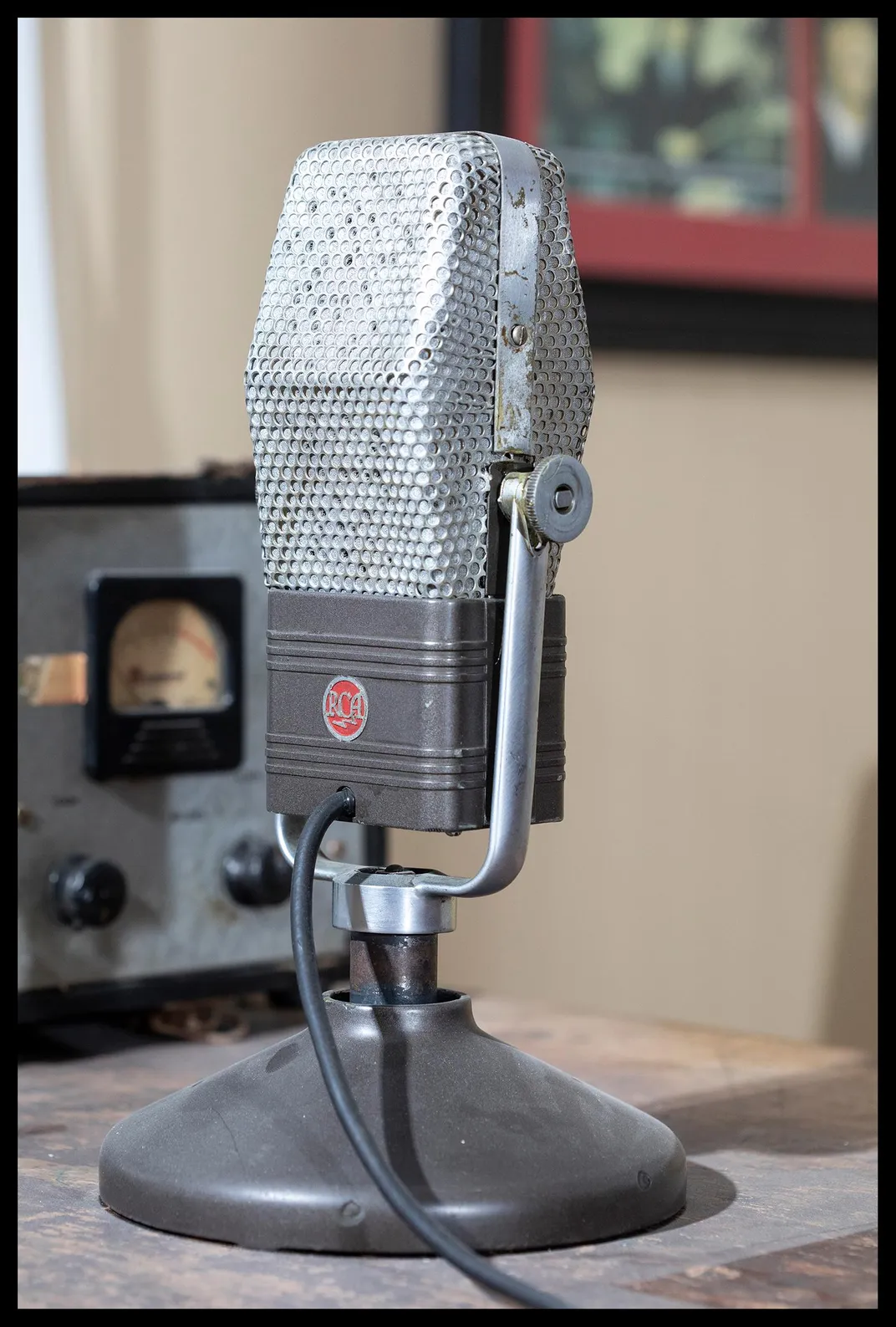
By the time the Four Vests started playing, Louise, George and their friends made their way up the back stairs to the bar and dance floor. “It was a good crowd that night, maybe 80 to 100 people,” recalls John Mahoney, a retired glassworker who was there. George “was wearing tight-fitting jeans and boots.” Janice Cooley, who ran a day care in her home, wondered, “Is that a boy or a girl?” The Four Vests played what today we’d call rockabilly music, mostly, with some Chuck Berry and other R&B standards.
It was a genre George knew and liked, and after they asked him a couple of times to play, he went up to the bandstand, strapped on a guitar and chatted briefly with the others. Then they swung into “Your Cheatin’ Heart,” the Hank Williams classic. They also played Chuck Berry’s “Johnny B. Goode” and Carl Perkins’ “Matchbox,” which the Beatles would later cover. George would introduce a number, says Mahoney, “and with that English accent he’d catch everybody’s attention. He’d grin a little bit and everybody liked him.”
Louise would recall the night as startling, with the audience banging on tables and stomping, but others remember it differently, as a pleasant but otherwise unremarkable evening. Janice Cooley says “he did have a wonderful voice.” One man offered advice for McCarty, which might not have gone down well with the Four Vests’ regular lead guitarist, whose instrument George borrowed. “That new kid that’s trying out for your band—you’d be crazy if you didn’t take him on.”
One Sunday in early February 1964, the people of Benton turned on their television sets along with a record-breaking 73 million other viewers to watch “The Ed Sullivan Show.” George’s second trip to America was proving to be very different from his first. His band was staying at the Plaza Hotel in New York City, where they needed dozens of police officers to provide round-the-clock protection. Onstage, George, already known as “the quiet Beatle,” looked a little lost standing between charismatic Paul and John as the girls in the audience screamed deliriously.
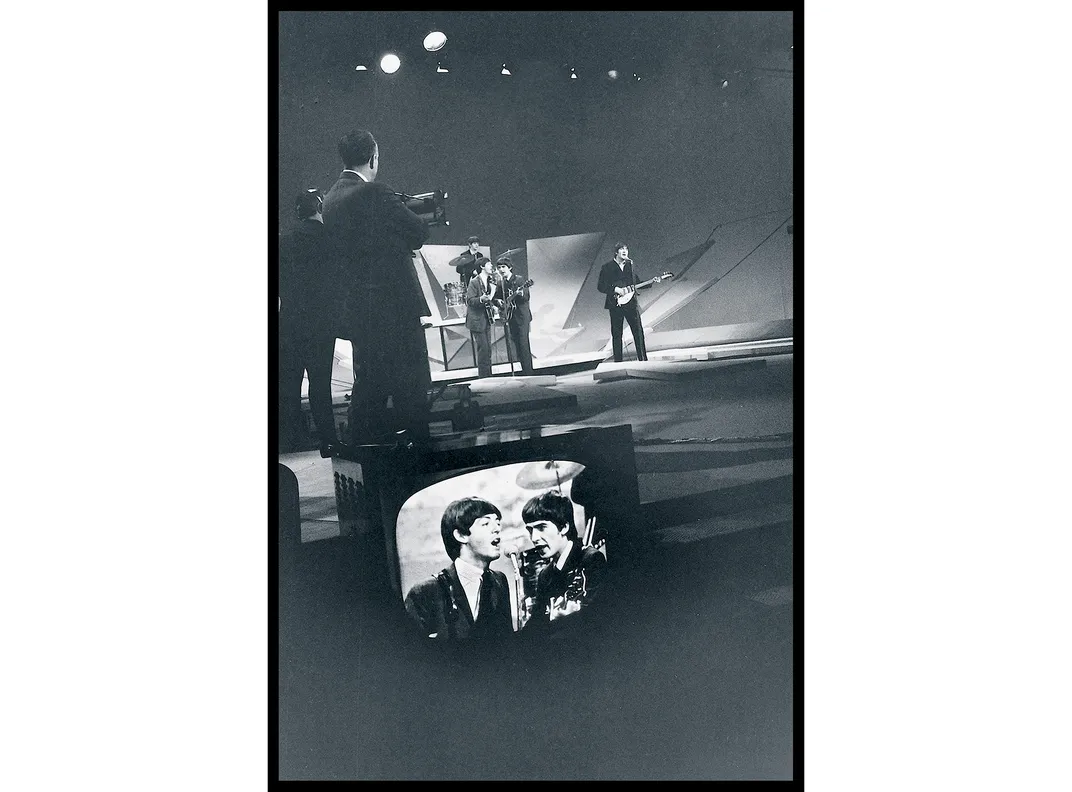
That performance was all the kids talked about for days afterward. Louise had to hire high school girls to sort through all the fan mail pouring into the house on McCann Street. When the Beatles played at White Sox Park in Chicago in 1965, George invited McCarty. Once he fought his way into George’s hotel room, they reminisced, though things were never the same.
By many accounts, George was never at ease with fame. “I realized this is serious stuff, this is my life being affected by all these people shouting,” he told Rolling Stone in 1987. He turned to drugs and alcohol and became increasingly protective of what little was left of his privacy. In 1999, he survived a homicidal attack in Friar Park, his 120-room mansion in Henley-on-Thames. By then, George had already been diagnosed with throat cancer, and soon afterward, he developed tumors in his lung and brain. In 2001, at age 58, he died at a house Paul McCartney was leasing in Beverly Hills.
For reasons that remain a mystery, George and Louise became estranged. In the late 1990s, when the Benton-area history buff Jim Kirkpatrick began writing Before He Was Fab, a chronicle of George’s visit, Louise told him not to bother trying to contact George directly.
The siblings reconciled at the end of George’s life, but after his death, a $2,000 monthly pension he had sent her since 1980 ended. “I’m struggling for money, like everyone,” Louise told a reporter for the Daily Mail in 2013, “but I am not on the breadline. I am not ‘skint,’ as they would say in Britain.”
After managing a Beatles tribute band called the Liverpool Legends in Branson, Missouri, Louise moved out of the region. People in Benton have lost touch with her, though she helped save the McCann Street house from destruction. For a time it was a B&B called A Hard Day’s Night.
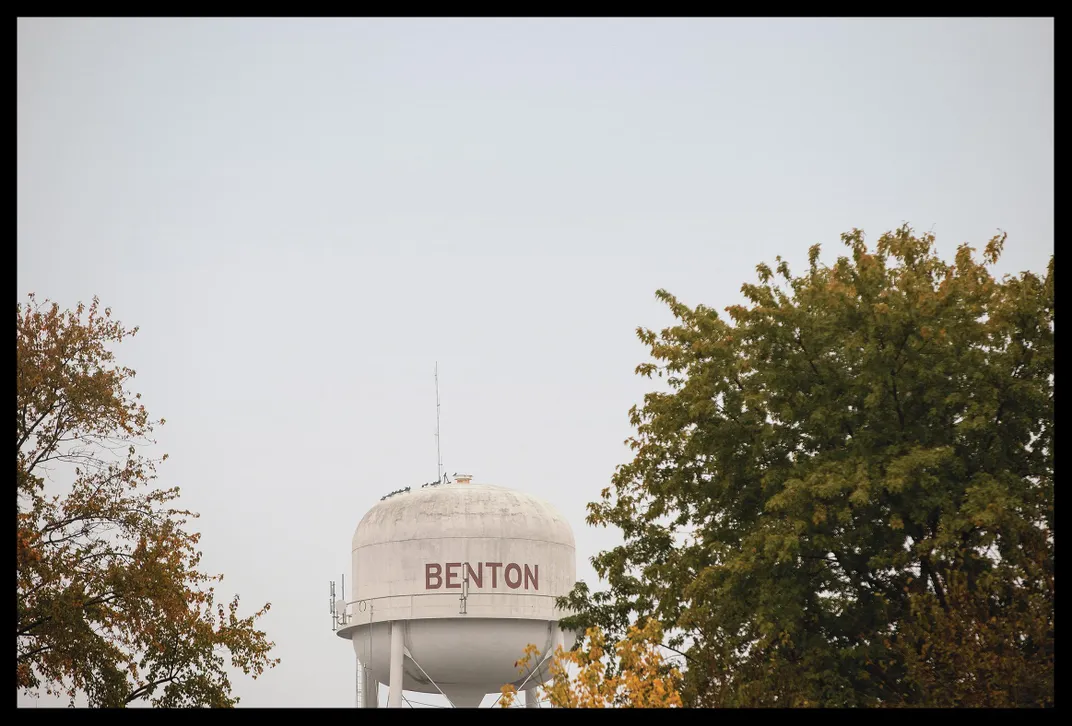
Meanwhile, the all-American town that once dazzled a young Beatle has fallen on hard times. The coal industry in the area has long since collapsed. Storefronts on the courthouse square are boarded up. At the VFW Hall in Eldorado the dance floor is being used for storage. It would be easy to drive right past the town without knowing its Beatles connection if it weren’t for a giant mural of George by a California artist, erected on the highway outside Benton in the summer of 2017.
Did Mahoney ever imagine that the English visitor would change music history? “Gosh, no,” the retired glazier says. “He was pretty good, I guess, for someone who looked kind of like a hippie, up there playing with that country band. But did I think he was going to be famous? No, can’t say I did.”
For his own part, George never said much about his visit beyond noting somewhat wistfully in a letter to Louise shortly after his return to England that he’d enjoyed her friends and neighbors: “They’re great people. They were glad to see me—not because I’m a Beatle, but because I’m me.”
:focal(2017x729:2018x730)/https://tf-cmsv2-smithsonianmag-media.s3.amazonaws.com/filer/26/ee/26ee2033-5dfc-4649-8e97-6fd6be4b29e5/mobile_-_may2020_a09_georgeharrison_copy.jpg)
/https://tf-cmsv2-smithsonianmag-media.s3.amazonaws.com/filer/19/bc/19bcdb11-7c54-4edd-9a9f-1e2b032658bf/openermay2020_a09_georgeharrison.jpg)

